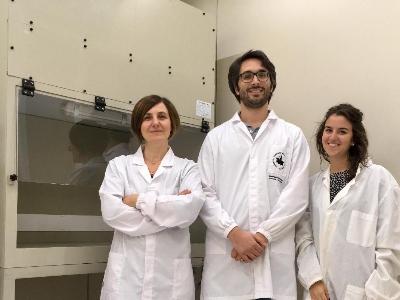A study carried out by Unimore was published on the international scientific journal American Journal of Physical Anthropology

The study of mummy hair found in Roccapelago of Pievepelago (MO) reveals the movements of these ancient ancestors.
The findings, which are object of the Bachelor’s degree thesis in Geological Sciences of a young student, Valentina Tavaglione, were made by the group of professor Anna Cipriani of the Department of Chemical and Geological Sciences (CHIMGEO) of Unimore, which also sees the participation of Ph.D. Federico Lugli.
The work carried out by the researchers of Modena included the analysis of the isotopic ratio of strontium in the hair of some mummies found, belonging to the Modern Age (14th-17th centuries) After preliminary anthropological analyses, the patterns of mobility of the buried bodies were studied by means of state-of-the-art forensic techniques.
“Therefore, some human hair was sampled from the crypt and prepared for the next analysis of the isotopic ratio of strontium” Unimore professor Anna Cipriani explains. “Indeed, this element allows us to understand how individuals moved during their lives, by comparing the isotopic ratio of their tissues with that of local proxies, like water, plants, and animals”.
These analyses revealed that individuals moved most likely towards the Tuscany area through mainly seasonal trips. Such evidence has later been confirmed by the study of parish registers, which show that the inhabitants of Roccapelago used to move to Tuscany in search of a job or as transhumant shepherds.
This work saw the cooperation of two researchers of the University of Bologna, Mirko Traversari and Stefano Benazzi, and caught the interest of the international scientific journal American Journal of Physical Anthropology, which published its results.
“In the future we consider applying these techniques to other Italian mummies and to cases of forensic interest – Unimore professor Anna Cipriani claims -, with the ultimate purpose of developing methodologies that may help recognise unidentified bodies ”.
The mummies had been found in 2009 during the emergency excavations at the Church of the Conversion of St. Paul in Roccapelago. An underground room was found underneath the church and dedicated to the burial of the inhabitants. Thanks to a particular micro-climate also favoured by the existence of two small windows, this burial chamber allowed for the partial and natural mummification of several human bodies.
Federico Lugli
Born in Carpi (MO) in 1990, he is a postdoctoral fellow at the Department of Cultural Heritage of the University of Bologna (Ravenna Campus). After getting a Bachelor’s Degree in Cultural and Environmental Heritage (University of Modena and Reggio Emilia) and a Master’s Degree on Prehistoric Archaeology (University of Ferrara), he completed his PhD studies at the Department of Chemical and Geological Sciences (University of Modena and Reggio Emilia), obtaining the specialisation in Geochemistry. His scientific interests include human evolution, palaeoanthropology, archaeological sciences and applied isotopic geochemistry. In particular, his research deals with the reconstruction of the diet and the mobility of men and animals who lived in the past through the isotopic and elemental study of bone and tooth rests. He is currently a member of the research team directed by professor Stefano Benazzi, who was recently awarded the first prize for an ERC project, which purpose is to investigate the evolutionary success of Homo sapiens at the expense of his cousin, Homo neanderthalensis.
Anna Cipriani
She has been an associate professor of Geochemistry and Volcanology at the Department of Chemical and Geological sciences of Unimore since November 2015. She was awarded the degree with honour in Geological Sciences at the University of Padua, and afterwards in 2004 he obtained a Master in Philosophy (2007) in Earth and Environmental Sciences at the Columbia University (USA). Since 2007, she has been carrying out her research as a Postdoctoral Research Scientist at the Lamont-Doherty Earth Observatory, where she is still an Adjunct Associate Research Scientist. In 2011 she came back to Italy as a temporary researcher working in the “Rita Levi Montalcini” young researchers programme. She has specialised in using the elementary and isotopic geochemistry to explain various geological processes occurring into the depths of the Earth and also on the surface, through the study of outcrops of xenoliths and crust and mantle rocks of the ocean floor and ophiolitic massifs. More recently, her work widened to include the application of the techniques for the geochemical analysis to archaeology and anthropology to examine patterns of human mobility.
Valentina Tavaglione
Currently a Master’s Degree student in Geological Sciences and Technologies at the Department of Chemical and Geological Sciences (Unimore), she graduated with honours in Geological Sciences at the same department. Her degree thesis helped deepen the study of human mobility patterns through the isotopic analysis of hair.
Categorie: International - english
Articolo pubblicato da: Ufficio Stampa Unimore - ufficiostampa@unimore.it il 23/10/2018

